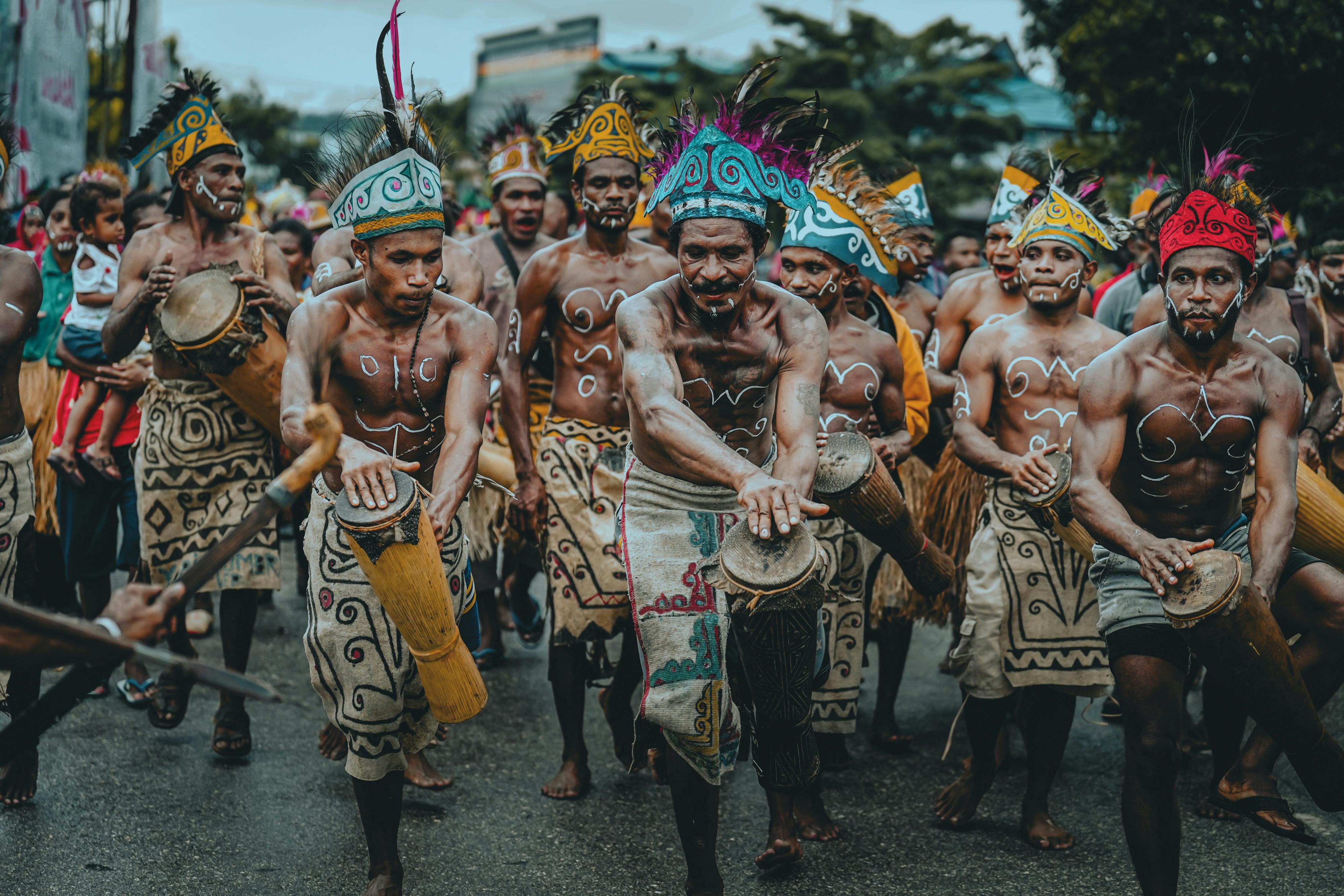
Photo by el jusuf
## Echoes in the Drumbeat: Why Music is Tribal
Music isn’t merely a modern phenomenon curated for entertainment or structured for performance. Its origins stretch back to humanity’s earliest days as an integral, almost essential, part of survival and community building – intrinsically tribal.
### The Survival Sound
Long before written scores or concert halls, music served practical purposes. Imagine early humans: rhythmic beats synchronized movements during hunts or migrations, enhancing efficiency and coordination under the open sky. Melodic patterns might have signaled warnings – a distinct sound for approaching danger, a different one for locating game. Harmony, even if simple, could have indicated safety or readiness (like a campfire starting to glow). These weren’t artistic flourishes; they were functional tools honed by necessity.
### Ritual and Shared Belief
Music was also the heartbeat of ceremonies and rituals that bound communities together – rites of passage from birth to death, seasonal celebrations ensuring survival through agriculture, and spiritual practices connecting people to their ancestors or deities. These gatherings reinforced social structures, shared beliefs, and collective identity. The communal experience amplified its power far beyond individual performance, embedding it in the cultural fabric.
### Communication Beyond Words
In many early societies, language wasn’t fully developed or didn’t carry all the weight needed for specific occasions. Music stepped into this gap, conveying complex emotions, stories of triumphs and tragedies, and shared experiences that words alone couldn’t capture with the same immediacy or emotional depth. Think of a single melody carrying generations’ worth of history.
### Tribal Identity Through Song
Songs were often vehicles for tribal lore – the origin myths, the heroes, the laws, and the collective memory. They acted as mnemonic devices, ensuring that stories and traditions survived long after oral histories might otherwise fade. Singing together created a shared emotional space, reinforcing group cohesion through rhythm and rhyme.
### The Lingering Echo
So what does this ancient tribal essence mean for us today? While our music has evolved into intricate compositions and diverse genres, the core elements of rhythm, melody, harmony, and communal experience – often tied to emotional resonance or narrative – still echo. Why do we enjoy drum circles that mimic primal rhythms even in modern cities? Why is a catchy chorus so effective at binding disparate listeners into shared enjoyment during a concert? Why does music have such profound power to evoke emotion and forge connections?
Perhaps because, despite our technological advancements, the fundamental human need for communal expression, emotional bonding through rhythm, and the transmission of shared identity via sound hasn’t vanished. Music remains tribal not just in its origins, but in these persistent qualities that define much of what we create and consume.
### Modern Tribalism?
Maybe you’ve noticed this yourself: a song can become an instant anthem for a feeling or even a cause – it’s like a modern drumbeat shouting a shared identity. We’re still singing our stories, just with more instruments. The tribal nature isn’t lost; it’s just been amplified across cultures and continents.
Understanding music as tribal helps demystify its power. It wasn’t born in sterile concert halls or recording studios (though those have become important too). Its enduring appeal lies in its deep connection to our shared human experience – the rhythm that brings us together, the melody that resonates within us.
